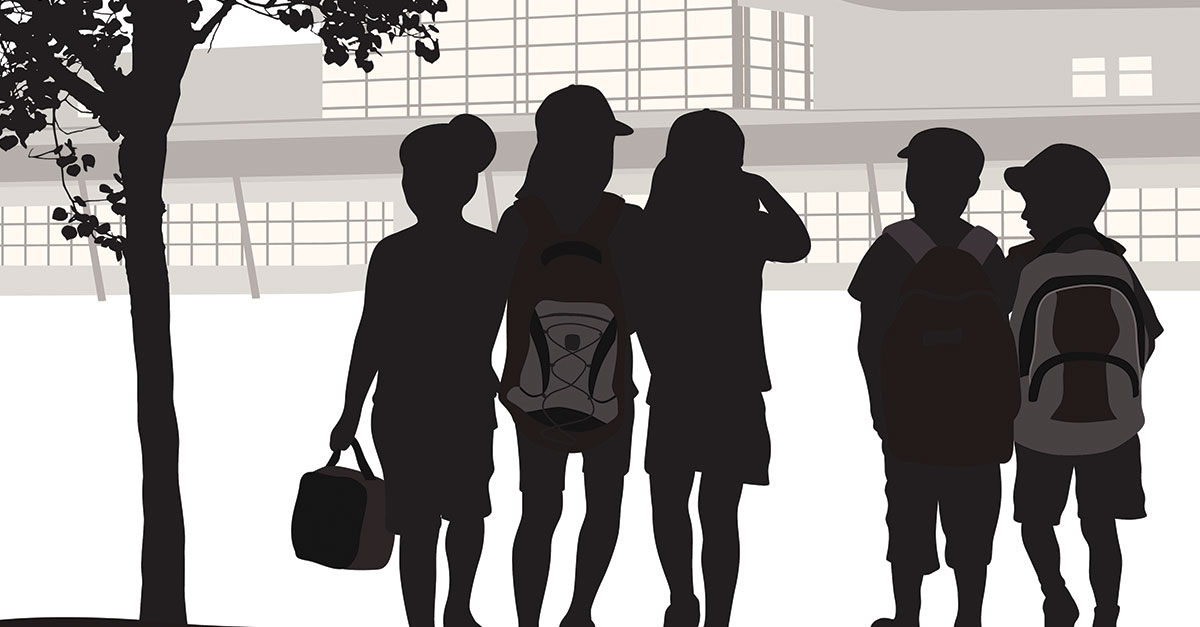October’s National Bullying Prevention Month is an opportunity to educate and raise awareness of bullying.
Between the lack of face-to-face socialization children have had with peers over the last year and a half, and the trauma experienced by many as a result of the pandemic, education officials have been preparing to handle challenging student behaviors through expanded social-emotional curriculum, relationship-building and open communication.
As it happens, those strategies are likely to aid in the prevention of bullying, according to Judy French, National Bullying Prevention Center coordinator at the center’s Los Angeles office. Because bullying is a learned social behavior, social-emotional learning provides an opportunity to set kids on a different path and build stronger relationships with school staff.
“Once you understand that bullying is a learned behavior, that there are things we can do to create healthier communities, why not do them?” French asked. “We’re starting to see that the social-emotional learning helps facilitate healthier relationships, helps facilitate communication. Those are linchpins for solving problems like bullying. And that’s what I think is the biggest difference over the last few years, not that bullying can get more complex and sophisticated, but that we have a better idea of how to prevent it, not just intervene.”
While bullying has long been viewed by many as a “childhood rite of passage” that “made kids tough,” research has found that bullying can have significant, long-term negative impacts including a loss of self-esteem, increased anxiety and depression for those involved.
Once known as National Bullying Prevention and Awareness Week, October’s National Bullying Prevention Month is recognized in communities across the country as a time to educate and raise awareness of bullying prevention. For the adults on campus, it is also a time to reflect and model better behavior.
“For kids to have that smooth transition back to in-person learning, we need to not only promote good social behaviors, we have to show them what it looks like to be in healthy relationships,” French said. “If we want something new, then we have to, as adults, take on the responsibility of saying, ‘It looks like this, let me show you.’ Not just promoting it, not just doing assemblies, but modeling it.”
Student-centered solutions
While the goal is to prevent bullying, some is still bound to happen. But tried and true methods for preventing bullying remain, despite the drastic changes brought on by the pandemic. Creating an environment that encourages open communication between a community of caring adults and students is one of the best prevention strategies, according to French.
“The lines of communication between caring adults and students must be as open as possible, must be as healthy as possible, must be as fluid and as reciprocal as possible, so that always, a student has a caring adult that they can make contact with at school,” French said. “When there’s that caring adult in the picture, and when a child knows that they can speak to an adult confidentially and the adult will do something with the information that child is bringing, then kids are much more likely to let us into the world where things are not going well, like bullying. We really rely on kids to be communicating with us about the bullying. They know first, they know who’s vulnerable in their world.”
Once bullying is reported, it is critical that solutions be student-centered. Bullying is not a one-off incident, but repeated negative behaviors directed by someone exerting power and control over another person done to hurt, harm or humiliate. There is often a power imbalance between those involved — be it size, strength, social status or other factors — and the target can only get something done when they bring somebody more powerful into situation, French explained.
“We should ask them what they want to have happen and incorporate their wants and needs to fix a bullying situation by getting their input and then working it out so that they feel empowered,” she said. “We found that when kids can express their needs and have those needs fulfilled, that their sense of confidence and power about changing the world is much greater. So again, it’s part of our responsibility to foster that. We are big on teaching adults to advocate for kids effectively, but then transferring that sense of advocacy to the child themselves.”
PACER’s National Bullying Prevention Center provides numerous free resources and toolkits for teachers, students and parents for National Bullying Prevention Month and year-round use, including:
- “What You Can Do” — A four-part series that provides comprehensive information for students and adults about how to help someone who is experiencing bullying, as well as how to address bullying in the community.
- “Bullying Prevention 101: A Quick Guide” — A three-part handout series that provides an overview of how bullying is defined, the roles involved, and helpful tips to address bullying behavior for elementary, middle and high school youth and their parents.
- “Student Action Plan Against Bullying” — Available in English, Spanish, Somali and Hmong, this document and corresponding guidance is designed for youth to complete, with or without an adult, to help them think through a difficult situation and determine steps to change what is happening to them or someone else. Educators working with a student who reported bullying or parents looking for ways to help your child respond to a bullying situation may also find this tool useful.




